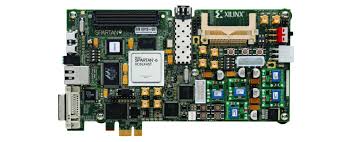FPGA Development Kits: A Comprehensive Guide
Introduction
Field-Programmable Gate Arrays (FPGAs) have emerged as versatile and powerful devices for a wide range of applications, from high-performance computing to embedded systems. FPGA development kits provide a platform for developers to explore, design, and implement FPGA-based solutions. This white paper aims to provide an overview of FPGA development kits, their suitability for various applications, and pricing considerations.
Understanding FPGA Development Kits
An FPGA development kit typically includes the following components:
- FPGA Board: A physical board containing the FPGA chip, along with supporting components such as memory, I/O interfaces, and power supply.
- Development Tools: Software tools for designing, simulating, and programming the FPGA, including hardware description languages (HDLs) like Verilog or VHDL, synthesis tools, and programming software.
- Documentation: Manuals, tutorials, and reference materials to assist developers in using the kit effectively.
Suitability of FPGA Development Kits
FPGA development kits are suitable for a diverse range of applications, including:
- Digital Signal Processing (DSP): FPGAs excel in DSP tasks such as filtering, modulation, and demodulation due to their parallel architecture and ability to handle high data rates.
- High-Performance Computing (HPC): FPGAs can accelerate HPC applications, especially those that involve custom algorithms or hardware-specific optimizations.
- Machine Learning and Artificial Intelligence (AI): FPGAs can be used to implement neural networks and other AI algorithms, providing hardware-accelerated inference capabilities.
- Embedded Systems: FPGAs can be integrated into embedded systems to provide flexibility, customization, and performance advantages.
- Prototyping and Research: FPGA development kits are ideal for prototyping new designs, experimenting with different algorithms, and conducting research in various fields.
Factors to Consider When Choosing an FPGA Development Kit
When selecting an FPGA development kit, several factors should be considered:
- FPGA Device: The choice of FPGA device will depend on the application's requirements for performance, resources (logic elements, memory), and power consumption.
- Board Features: Consider the board's I/O interfaces (USB, Ethernet, GPIO, etc.), memory options, and expansion capabilities.
- Development Tools: Ensure that the included development tools are compatible with your preferred design flow and meet your specific needs.
- Community and Support: A strong community and active support forums can be valuable resources for troubleshooting and learning.
- Cost: The price of an FPGA development kit will vary depending on the FPGA device, board features, and included tools.
Popular FPGA Development Kits and Pricing
Here are some popular FPGA development kits and their approximate price ranges:
- Arduino Due: A low-cost kit with an Atmel SAM3X8E ARM Cortex-M3 microcontroller and an FPGA. Price: $100-$150.
- Digilent Arty: A versatile kit featuring a Xilinx Artix-7 FPGA. Price: $200-$250.
- Intel DE10-Nano: A high-performance kit with a Intel Cyclone V FPGA. Price: $300-$350.
- Microsemi IGLOO2 Starter Kit: A cost-effective kit for prototyping and learning. Price: $200-$250.
- Xilinx Zynq UltraScale+ EV Evaluation Kit: A high-end kit for advanced applications. Price: $1000+.
Note: Prices may vary depending on the vendor and specific configurations.
Conclusion
FPGA development kits offer a powerful and flexible platform for designing and implementing a wide range of applications. By carefully considering factors such as FPGA device, board features, development tools, and cost, developers can select the most suitable kit for their specific needs.



